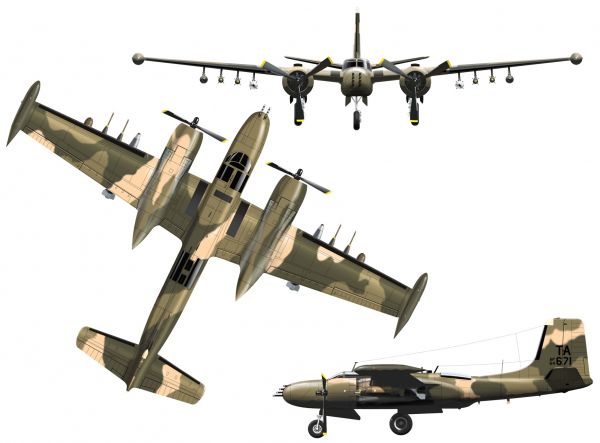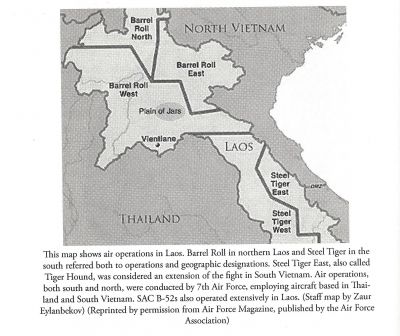B-26K
Background
Watch our video on the background and development of the B-26K here: https://youtu.be/5C7l8lC4nQ4
During the mid-1950s, B-26-equipped USAF wings began to be re-equipped with jet-powered Martin B-57 and Douglas B-66 aircraft, and the Invaders were removed from front-line service. However, during the 1960s the 1st Air Commando Wing at Eglin AFB in Florida continued to use B-26s in order to develop counter-insurgency techniques and tactics. In addition, some B-26s were operating clandestinely in South Vietnam, supposedly serving with the South Vietnamese air force, but actually flown by American aircrews.
Unfortunately, these B-26s began to suffer frequent wing failures, forcing them out of service. Those that remained were provided with a strengthening wing strap along the bottom of the wing spars to prolong service life. The success of these modifications led the USAF to order a remanufactured version of the Invader from the On Mark Engineering Company of Van Nuys, California that would be specifically adapted to the counterinsurgency role. The On Mark company had not previously built any military aircraft, but they had been extensively involved in conversions of Invaders for civilian use. The designation B-26K was applied and the name Counter Invader was chosen.
Development
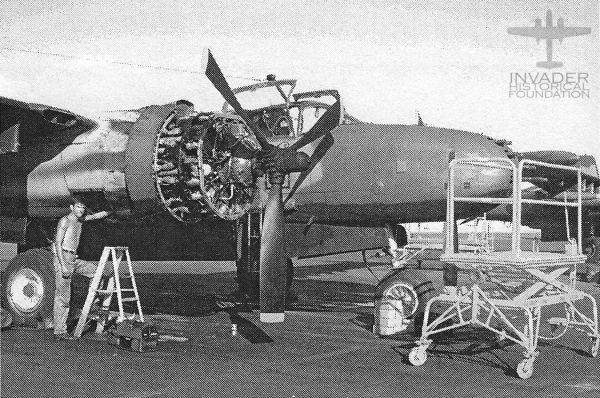
The Counter Invader was powered by a pair of 2500 hp Pratt & Whitney R-2800-103W water-injected engines driving a set of fully-reversible automatic feathering propellers. The wings were entirely rebuilt and strengthened by the installation of steel straps on the top and bottom of the spars. The rudder was enlarged to improve single-engine handling. Permanent 165 US gallon wingtip fuel tanks were installed. An anti-skid wheel braking system was adopted. Deicer boots and anti-icing equipment was added. The instrument panel was revised and provision for dual controls was made. New electronic equipment was adopted. Eight new underwing pylons were added for a variety of external stores. The dorsal and ventral defensive turrets were eliminated, and fixed armament consisted of a set of eight 0.50-inch forward-firing machine guns in the nose. Alternatively, the aircraft could be fitted with a glazed nose for photographic reconnaissance.
Among the other changes incorporated to the B-26K variant were updated cockpits. Many of the dials and displays were updated, the weapons switches were updated, additional instrumentation was added on the Navigator's side, and a secondary control yoke was fitted to the cockpit to allow flight from either seat.
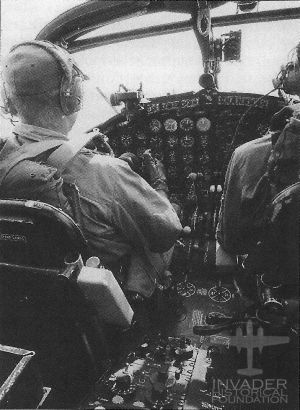
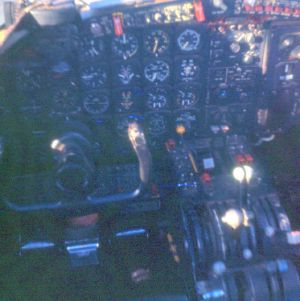
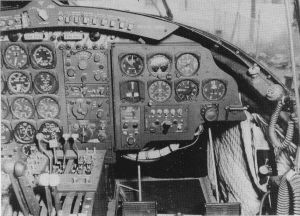
The first modified Counter Invader was built from RB-26C 44-35634. It had been converted into a B-26B in August of 1961 and employed as a squadron "hack". This aircraft was transferred to On Mark in October of 1962. When the work was completed, the aircraft was re-designated YB-26K. Contrary to some published sources, it was NOT assigned the new serial number 63-5634--the number 35634 painted on the aircraft were simply the last 5 digits of its original serial number. It flew for the first time on January 28, 1963. It was delivered to the 1st Air Commando Wing at Hurlburt for evaluation in June of 1963.
Following the completion of test flights, the USAF ordered 40 B-26Ks modified to similar standards. Most of the aircraft selected for conversion were B-26Bs or TB-26Bs, with just two B-26Cs and a single JB-26C. They were assigned the new serial numbers 64-17640 through 64-17679. The B-26Ks differed from the YB-26K primarily in having 2500hp R-2800-52W engines in place of the R-2800-103Ws. The propeller spinners were omitted and the six wing guns were deleted. The B-26K could carry 4000 pounds of bombs internally, plus up to 8000 pounds on the underwing racks. Besides the fixed wingtip tanks, two 230-gallon drop tanks or a 675-gallon bay tank could be carried. These changes increased the maximum cruising speed from 240 to 265 knots, the combat radius from 210 to 500 nautical miles, and increased the armament load from 7500 to 12,000 pounds. There were significant improvements in rate of climb and service ceiling. However, the aircraft was somewhat less stable than the original B-26 and it was no longer possible to trim it for hands-off flight.
Several of the Invaders being converted to the B-26K variant at the OnMark Engineering Company.

This photo shows 44-35608 being converted into 64-17660 in the summer of 1964.
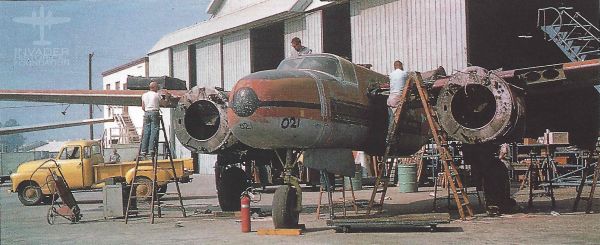
The B-26K Variants underwent several important changes compared tot he A-26B versions.
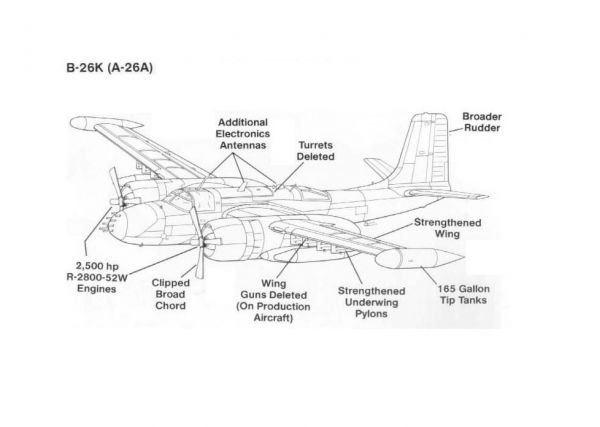
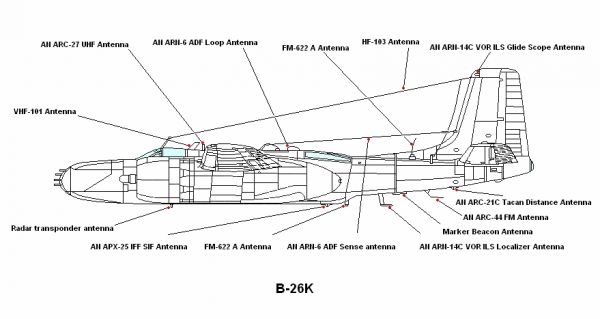
Weapons
Machine guns
The B-26K's weapons loadout was significantly different than the original A-26 variants. One feature that was the same as late-model Invaders from World War II was the 8-gun nose configuration. Unless the plane was outfitted as an RB-26K variant with a glass nose, all of the B-26Ks had the 8-gun nose, which carried 8x .50 caliber machine guns used for strafing ground targets.
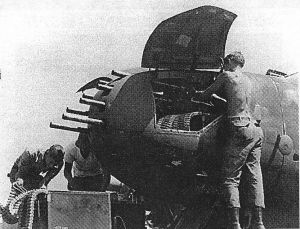
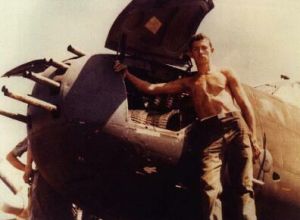
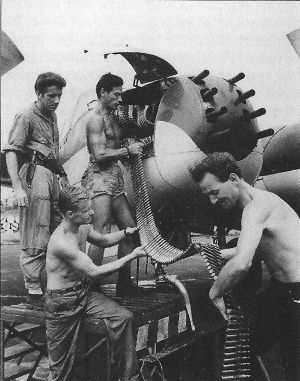

The pilot fired the nose guns by lining up the target in the heads up display that appeared on a thin sheet of plastic mounted to the instrument panel. Here a pilot is seen practicing targeting a fellow B-26K while using empty guns during a training exercise.
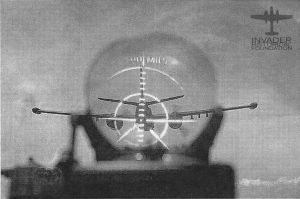
Congo Weapons
During the operations in the Congo with the CIA, the political restrictions prohibited the B-26K from carrying bombs or napalm. The bomb bay was fitted with an extra fuel tank. The could use the nose guns and rockets, which usually consisted of up to 4 LAU-3A rocket pods on each wing.

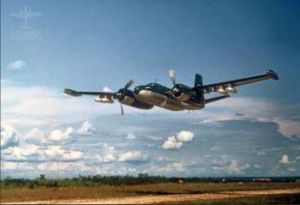
Vietnam Weapons
In Vietnam, B-26K weapons loadout changed a lot based on the mission area. In the Barrel Roll area of operations they planes were typically equipped with: 4x SUU-25 Flare Dispensers (each with 6x 2Million candlepower Mk24 Flares), 2x M47 100lb Phosphorous Bombs, and 2x CBU-14 Cluster Bomb Units on the wings, plus whatever internal bombs they needed.
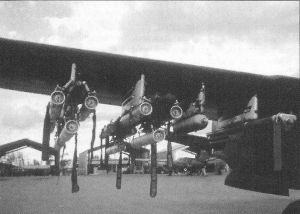
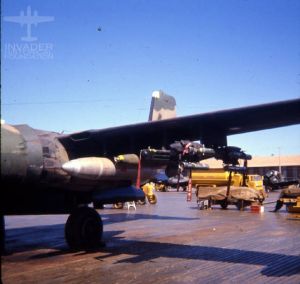
This plane shows a typical loadout for Steel Tiger operations in 1968-1969. 2x BLU-27 750lb bombs, 4x BLU-23 500lb Napalm bombs, and 2x CBU-14 Cluster Bombs.

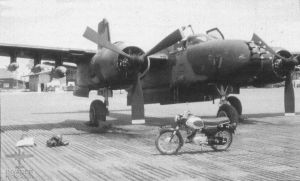
Inside of the bomb bay the B-26K could carry 4x M32 Incendiary clusters (aka: Funny Bombs), and 6x M1A1 Fragmentation Clusters.

Miscellaneous Weapons
This imposing photo shows a B-26K model with an early paint job carrying a full load of weapons, including napalm, rockets, and bombs. That loadout rules out this plane as being on of the Congo aircraft of Anstalt Wingmo as no bombs or napalm were authorized in the Congo. It is also not a Vietnam era plane due to the wrong paint scheme. It could be from the 605th Air Commando Squadron in Panama, but our guess is that it is most likely from the 603rd Air Commando Squadron and probably conducting a live fire training.

In total, the B-26K could carry any of the following equipment:
BLU-27 750lb bombs
BLU-23 500lb Napalm bomb
CBU-14 Cluster Bomb
M1A1 Fragmentation cluster
M32 Incendiary Cluster
M47 100lb Phosphorous bomb
SUU-25 Flare Dispenser
Mk82 General Purpose Bombs
LAU-3A Rocket Pods
RB-26K
B-26Ks were normally fitted with an eight-gun solid nose, but 10 planes were outfitted as glass-nosed RB-26K versions. In addition to the glass nose, which housed a K38 forward oblique reconnaissance camera, the RB-26K had a removable bomb bay system of four cameras and flash ejectors. Inside the bomb bay was a KA-56A mirror camera system with an automatic in-flight processing system, and 3x F-492 cameras mounted at different angles. A vertical P2 Camera was also installed in the tail.
All 10 of the RB-26Ks were either shot down or converted into gun-nosed variants by 1968.
This image shows 64-17655 wearing a glass nose while outfitted as an RB-26K Variant. Note the forward facing camera in the nose - a K38 forward oblique reconnaissance camera.
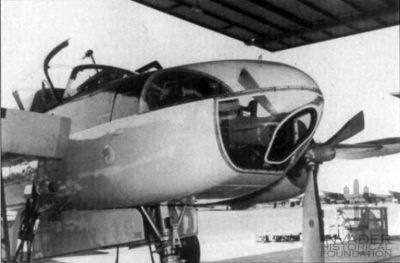
This image shows a clear picture of the inside of the RB-26K bomb bay. There are numerous cameras installed. Note also that the standard bomb bay doors are swapped out for doors that have multiple cut-outs that allow the cameras to take photos with the doors closed. Inside the bomb bay was a KA-56A mirror camera system with an automatic in-flight processing system, and 3x F-492 cameras mounted at different angles.
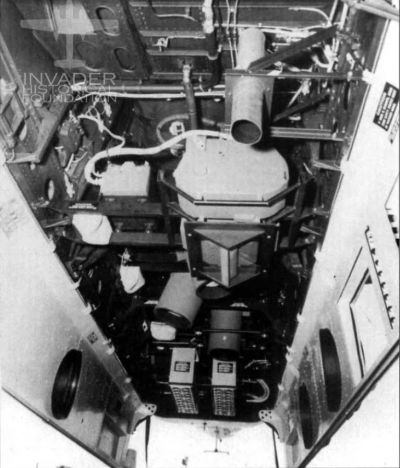
The following planes were known to have been outfitted with the RB-26K Package. There were 10 RB-26K Packages produced, but only 7 planes are known to have been equipped with them at this time. As I uncover the identity of the remaining 3 planes I will update this section.
| USAF S/N | Image |
|---|---|
| 64-17640 | 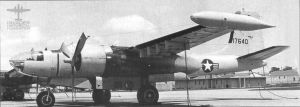
|
| 64-17641 | 
|
| 64-17643 | 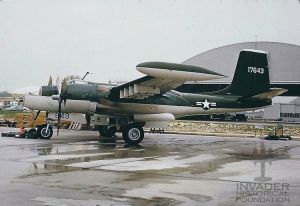
|
| 64-17648 | 
|
| 64-17655 | 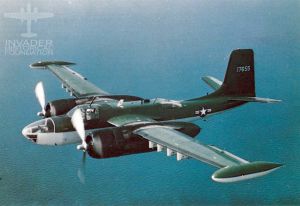
|
| 64-17657 | 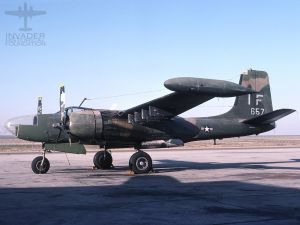
|
| 64-17664 | 
|
For 664, look in the background of the image posted. You'll see it as the 2nd plane in the lineup.
Operational History
The first non-prototype B-26K (64-17640) flew on May 26, 1964. The B-26Ks were delivered to the USAF between June 1964 and April 1965. They had originally been intended to replace the ageing B-26s operating in Vietnam with Farm Gate. However, these B-26s had been taken out of service prematurely due to wing spar fatigue, and had been replaced by A-1 Skyraiders. Consequently, the B-26K was no longer urgently needed in Southeast Asia, and most the planes were kept in the USA for the time being. They officially entered service with the 602nd Fighter Squadron (Composite) at Hurlburt Field (an Auxiliary of Eglin AFB). The squadron was later renamed the 6th Fighter Squadron (Composite). The last eight were allocated to the 605th Air Commando Squadron at Howard AFB in the Panama Canal Zone. The original paint scheme for the B-26K Invaders was a gloss green upper half and a gloss white lower half. A few of the planes at Howard AFB were also tested out using a blue-grey all-over gloss paint scheme.
Note that some sources show the Panama Invaders as operating out of Albrook AFB, but the official inventory records show no mention of this whatsoever.
Anstalt Wigmo
Unofficially, the B-26K saw combat almost immediately after being introduced. Five planes were lent to the CIA to support a clandestine operation in the Congo called Anstalt Wigmo. These planes were flown by volunteer Invader pilots from Latin American countries that had some experience with flying Invaders in combat and in CIA operations. They operated the planes as the 211th Squadron of the Congolese Air Force. The first three Invaders assigned to this operation, 64-17644, 64-17645, and 64-17646 arrived in the Congo 18 Aug 1964. In September, they were joined by a regular B-26B (44-35890) from CIA inventory, and the last two K models to arrive, 64-17649 and 64-17662, showed up in January 1965. In addition to providing some important real-world combat testing of the new K-model, this operation also allowed air crews in the field to overcome a technical issue. The original modifications from On Mark did not include any changes to the engine cowling, but they did put larger engines in the air frame. During wartime operations in the tropics this caused the engines to overheat. The crews operating the Invaders in the Congo solved this problem by moving the air intake higher up the cowling and enlarging the vent. This "Congo Cowling", as it became known, was eventually adopted as a standard modification on the K models and helped keep them running later in the jungles of southeast Asia. These Congo planes were painted in the same green and white gloss scheme as the American planes, but they lacked any American identifying marks at all. Even their serial numbers were abbreviated and shortened.
Official Missions
The rest of the B-26Ks not in a secret op in the Congo spent the first couple of years of their service on training units in the USA and in Central America. In mid-December of 1965, the B-26 training program moved from Hurlburt Field (Eglin AFB), Florida to England AFB, Louisiana and the Invader unit changed its name to the 603rd Fighter Squadron, which was subsequently renamed the 603rd Air Commando Squadron.
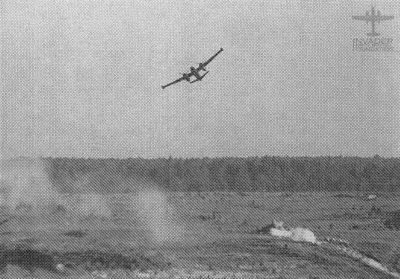
Southeast Asia
In the spring of 1966, it was decided to deploy B-26Ks to Southeast Asia in an attempt to stem the flow of war material down the Ho Chi Minh trail from North Vietnam via Laos. Since northeastern Thailand was much closer to the intended area of operations in southern Laos, the US Government obtained permission for the Invaders to be stationed there rather than in South Vietnam. However, during the mid-1960s, Thailand did not permit the basing of bombers on its territory, and so in May 1966 the aircraft were reassigned the old attack designation of A-26A, thus bringing the Invader full-circle. Some people mistakenly call this renamed plane the A-26K, but this is not correct as there was never an A-26K. When The B-26K was renamed as an Attack class it took A-26A because the A slot had never been officially used; the XA-26A was not accepted for production.
An unknown A-26A is being ferried over the Pacific, coming from or going to combat in Asia. Note the under wing fuel tanks beside the engines.

The A-26As deployed to Southeast Asia were attached to the 606th Air Commando Squadron, based at Nakhon Phanom Air Base (NKP) in Thailand. The mission of the 606th was known as Lucky Tiger. The A-26A unit was officially known as Detachment 1 of the 603rd Air Commando Squadron on six months' temporary duty in Thailand. The operations of the A-26As over Laos were considered black ops, clandestine operations and the national insignia were painted out in order to maintain some sort of plausible deniability if something went wrong and one of them were forced down. These early missions also required a Vietnamese Observer who rode in the now-vacant gunners compartment. Initially they were supposed to authorize targets, and fairly quickly they were just along for the ride. After a time the pretense was dropped altogether and they were no longer required. The area of the Laotian panhandle along the North Vietnamese border became known as Steel Tiger, and it became the primary target of the A-26As. By the time the A-26As arrived at NKP Air Base they were painted in a traditional jungle 3-color camo.
Most of the A-26A combat missions over Laos were interdiction missions flown at night, the North Vietnamese antiaircraft defenses that were installed along the Ho Chi Minh Trail making it too dangerous to fly slow-moving aircraft such as the piston-engined A-26A over the area during the day. The primary targets were truck traffic along the Trail. Sometimes the A-26As were equipped with AN/PVS2 Starlight scopes for enhanced nighttime visibility. Most of the time they were equipped with solid noses, but a few missions were flown with glass noses. By December 1966, the A-26As had claimed a total of 99 trucks destroyed or damaged. At the end of December, the aircraft were reassigned to the 634th Combat Support Group at Nakhon Phanom. In April of 1967, the A-26As were officially transferred over to the 609th Air Commando Squadron, which was part of the newly-formed 56th Air Commando Wing.
The A-26A could carry a maximum of 8000 pounds underneath the wings plus 4000 pounds internally. However, the actual load carried on combat missions was usually somewhat less in order to gain maneuverability and to reduce stress loads. A typical underwing load was a pair of SUU-025 flare dispensers, two LAU-3A rocket pods, and four CBU-14 cluster bomb units. Later, the rockets and flares were often replaced by 500 lb BLU-23 or 750 lb BLU-37 finned napalm bombs. The M31 and M32 incendiary clusters could also be carried, as well as M34 and M35 incendiary bombs, M1A4 fragmentation clusters, M47 white phosphorus bombs, and CBU-24, -25, -29, and -49 cluster bomb units. General-purpose bombs such as the 250-lb MK-81, the 500-lb MK-82, and 750-lb M117 could also be carried.
In the summer of 1968, all Air Commando Wings were re-designated as Special Operations Units, and the 56th ACW became the 56th Special Operations Wing, with the 609th ACS becoming the 609th Special Operations Squadron.
This image by renowned aviation artist, Harley Copic, depicts the A-26A during it's height of operations in Vietnam.
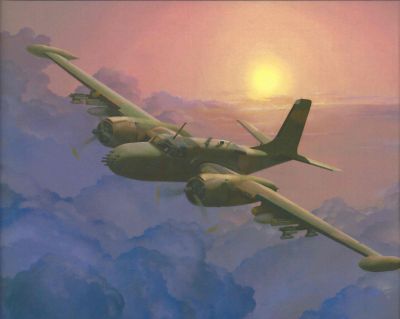
During more than 2 years of operation, the 609th Special Operations Squadron flew 7,159 combat sorties for a total of 19,762.7 combat flying hours. During this period, the Nimrods were credited with destroying 4,268 trucks and damaging 696 more. The Nimrods also destroyed 201 enemy gun emplacements and silenced an additional 696. The extremely high truck kill record, averaged slightly better than 1 truck destroyed or damaged for each one and one-half sortie flown. This was significantly higher than any other weapon system currently in use in the Southeast Asian Theater.
Retirement
The night interdiction tasks of the A-26A were gradually taken over by AC-130A and AC-130E gunships, and the Counter Invaders were phased out of active service by November of 1969. The losses had been fairly heavy, with no less than twelve out of the 30 that had served in Thailand at one time or another having been lost to enemy action. The 609th SOS was awarded the Presidential Unit Citation for extraordinary gallantry.
Following their withdrawal from service, most of the A-26As were immediately transferred to storage with the MASDC at Davis-Monthan. Five were handed over to the South Vietnam Air Force for use as instructional airframes (64-17641, 64-17644, 64-17652, 64-17654, & 64-17677). These were blown up at Nha Trang in March of 1975 as the North Vietnamese army was about to overwhelm the South. One of those airframes is pictured here at Nha Trang in the early 1970's.

Ten were held in readiness just in case they might be needed again and it was not until February 1973 that the last A-26A was consigned to storage. Five of them ended up in museums in the USA and South Korea.
See a complete list of all of the B-26K/A-26A planes here: Serial Numbers starting with 64 or browse the specific planes from the links below.
Paint Schemes
These illustrations convey the basic ideas of the paint schemes for the B-26K/A-26A. For specific subtle differences, see the reference photos below.
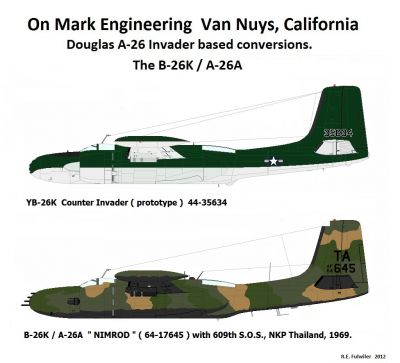
The Congolese planes of the 211th Squadron had the basic two-tone paint scheme.
File:Congo drawing.jpg
The planes of the 605th Air Commando Squadron had black engine nacelles.

Two Tone Variants
The B-26K originally came with a two-tone paint job with a gloss-medium green upper half, and a gloss white bottom half. All of the planes of the 211th Squadron used this paint scheme.

During 1965 a couple of planes in the 603rd Air Commando Squadron at Hurlburt Field were painted all-over gloss grey-white as a test. This scheme was ultimately phased out at the same time as the two-tone scheme.
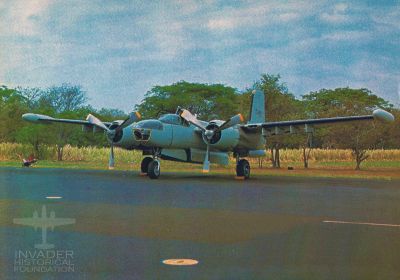
Also during 1965 the planes of the 605th Air Commando Squadron at Howard AFB in Panama were painted with gloss black nacelles.
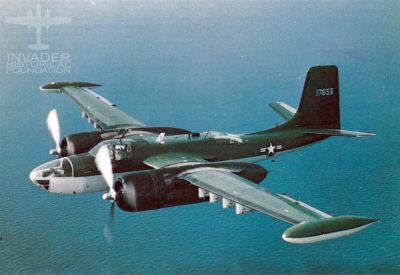
Camo Variants
During 1966 the planes were painted in a 3-tone camouflage pattern in black, green, and tan. The serial numbers were painted in small black numbers.

In late 1966 the small black numbering was changed to small white numbering.
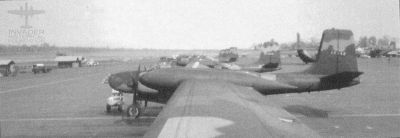
In 1967 the planes received a slight variant to the paint, with large two letter Squadron identifiers - IF on the Invaders. While most people assume that the IF code is for the 606th ACS, in truth the IF code was really used by the 603rd ACS and it was in use until the last Invaders were retired in 1969. Bear in mind that the first A-26As in Vietnam were operationally attached to the 606th, but on paper they were a detachment of the 603rd. The 603rd tail code was always painted in white.

In 1968 the planes were revised again with the formation of the 609th ACS, which used tail code TA. The TA code was painted black. The last three digits were also painted in small numbers in red on the nose and the nose wheel doors. The 603rd SOS continued to use white tail codes. See B-26K Exterior for detailed examples of the TA codes used by the 609th.
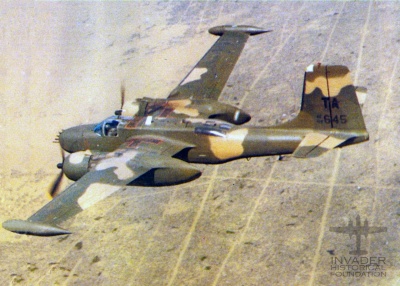
In 1966, on all Camo variants, planes that were used for training or peacetime missions were painted with a neutral grey underbelly. Planes that were involved in combat operations were painted with a black underbelly. By 1968 all planes had been painted with a black underbelly regardless of mission.

In Southeast Asia the planes had their truck kill markers painted on the Navigator's side, starting under the wing. Long-serving planes with a high kill count had markers that stretched all the way to the nose.
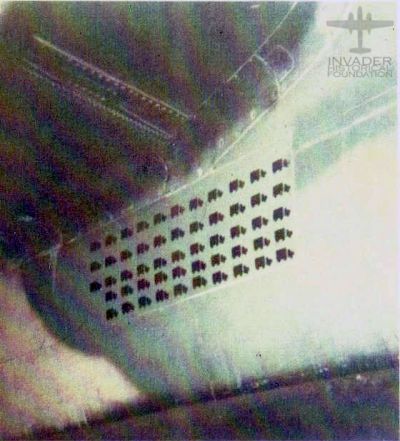
List of Planes
| USAF S/N | Converted from | Status | End date | Comments |
|---|---|---|---|---|
| 64-17640 | 44-35896 | On Display | Present | Purchased by State of Georgia Forestry Commission (N267G), sold to Air Spray, Ltd, Owned by Arthur W. McDonnell (N2294B), acquired by USAF Museum |
| 64-17641 | 44-35322 | Shot down | 29 Dec 1967 | Cpt Cruz, Cpt Potter, A1C Foster - all KIA |
| 64-17642 | 44-35435 | Lost in action | 27 Aug 1967 | Lt.Col Jensen, Maj Smiley - both MIA, later KIA |
| 64-17643 | 44-35392 | Crashed, destroyed | 24 Jul 1966 | Maj Duke, Cpt Tanimoto - both KIA |
| 64-17644 | 44-35451 | Destroyed | Mar 1975 | Blown up at Nha Trang to prevent enemy capture |
| 64-17645 | 44-35546 | Destroyed | Mar 1975 | Blown up at Nha Trang to prevent enemy capture. |
| 64-17646 | 44-35375 | Crashed | 8 Jul 1969 | Crashed into hillside during mission. Last Invader lost in combat. Maj. Sizemore, Maj. Andre - both KIA. |
| 64-17647 | 44-35904 | Scrapped | 1976 | Some list it erroneously as scrapped in 1972 because that's when it was declared obsolete by AMARC, but it was sold to Allied in 1976. |
| 64-17648 | 43-22732 | Shot down by AA | 30 Apr 1968 | Some sources list is as lost in May 1968, but the actual mission was on 30 Apr. Lt. Col. Pietsch, Maj. Guillerman - Both MIA, later KIA. |
| 64-17649 | 43-22720 | Scrapped | 1976 | Some list it erroneously as scrapped in 1972 because that's when it was declared obsolete by AMARC, but it was sold to Allied in 1976. |
| 64-17650 | 44-35766 | Shot Down | 28 Jun 1966 | Some sources list 4 KIA, but my records only show Cpt. Dudley, 1Lt Cavalli, and Cpt Wolfe - KIA. |
| 64-17651 | 44-34119 | On Display | Current | Struck from USAF Inventory Nov 1969, sent to Davis-Monthan. At some point in the 1980s, sent to Korea for preservation. |
| 64-17652 | 44-34361 | Destroyed | Mar 1975 | Blown up at Nha Trang to prevent enemy capture |
| 64-17653 | 41-39378 | On Display | Current | Pima Air and Space Museum |
| 64-17654 | 41-39491 | Destroyed | Mar 1975 | Blown up at Nha Trang to prevent enemy capture |
| 64-17655 | 44-34184 | Scrapped | 1976 | Some list it erroneously as scrapped in 1972 because that's when it was declared obsolete by AMARC, but it was sold to Allied in 1976. |
| 64-17656 | 44-35847 | Crashed | 16 Dec 1964 | Nav survived, but pilot died. Unable to locate info on crew. 1st K model lost. |
| 64-17657 | 43-22649 | On Display (Partially), and used for parts. | Current | The nose is on display at Wings Museum in East Essex, UK. The rest was used for parts to restore 44-34172. |
| 64-17658 | 44-35685 | Scrapped | 1976 | Some list it erroneously as scrapped in 1972 because that's when it was declared obsolete by AMARC, but it was sold to Allied in 1976. |
| 64-17659 | 41-39564 | Unknown, presumed scrapped | 1967 ? | Partial record from Davis-Monthan showing the plane arriving from a unit that formed after 1967. No further details. |
| 64-17660 | 44-35608 | Scrapped | 1976 | Some list it erroneously as scrapped in 1972 because that's when it was declared obsolete by AMARC, but it was sold to Allied in 1976. |
| 64-17661 | 44-35433 | Scrapped | 1976 | Some list it erroneously as scrapped in 1972 because that's when it was declared obsolete by AMARC, but it was sold to Allied in 1976. |
| 64-17662 | 44-35458 | Lost in Action | 21 Aug 1967 | Missing on mission, no trace found. Cpt. Kerr, 1Lt Morgan - both MIA, later KIA. |
| 64-17663 | 41-39462 | Crashed | 23 Apr 1965 | Destroyed in accident, no word of crew. |
| 64-17664 | 43-22665 | Scrapped | 1976 | Some list it erroneously as scrapped in 1972 because that's when it was declared obsolete by AMARC, but it was sold to Allied in 1976. |
| 64-17665 | 44-34145 | Scrapped | 1976 | Some list it erroneously as scrapped in 1972 because that's when it was declared obsolete by AMARC, but it was sold to Allied in 1976. |
| 64-17666 | 44-35483 | On Display | Current | On Display as Gate Guard at Hulburt Field, FL. |
| 64-17667 | 44-35468 | Shot Down | 23 Mar 1969 | Lt. Col Widdis, Maj. Davis - both MIA, later KIA. |
| 64-17668 | 44-34652 | Shot Down | 22 Feb 1967 | Plane damaged by AA, fire in the engine, crew bailed out successfully and rescued, plane exploded in mid-air. |
| 64-17669 | 44-34606 | Lost in action | 22 Feb 1967 | Destroyed by debris from explosion of 64-17668. Cpt Campbell, Cpt Sholl - both KIA. |
| 64-17670 | 44-35634 | Scrapped | 1976 | Some list it erroneously as scrapped in 1972 because that's when it was declared obsolete by AMARC, but it was sold to Allied in 1976. |
| 64-17671 | 44-35820 | Scrapped | Circa 2000 | Was on display at Florence Air & Missile Museum, but was eventually cannibalized for parts. |
| 64-17672 | 44-35251 | Shot Down | 14 Dec 1966 | All 3 crew rescued due to piloting skills of Lt. Col. Howarth. |
| 64-17673 | 44-34135 | Crashed | 11 Mar 1969 | Crashed due to fuel starvation. Cpt. Monette, Maj Callanan - both KIA |
| 64-17674 | 41-39573 | Unknown | Unknown | Some sources list is destroyed in accident in Jan 1969, but Davis-Monthan shows record of receiving the plane in Oct 1969. No further information. |
| 64-17675 | 44-34173 | Scrapped | 1976 | Some list it erroneously as scrapped in 1972 because that's when it was declared obsolete by AMARC, but it was sold to Allied in 1976. |
| 64-17676 | 41-39596 | On Display | Current | On Display at National Museum of the Air Force, Wright-Patterson AFB. |
| 64-17677 | 44-34108 | Destroyed | Mar 1975 | Blown up at Nha Trang to prevent enemy capture |
| 64-17678 | 44-35205 | Scrapped | 1976 | Some list it erroneously as scrapped in 1972 because that's when it was declared obsolete by AMARC, but it was sold to Allied in 1976. |
| 64-17679 | 44-34198 | Operational | Current | Flying today as "Special Kay" out of Texas. |
Disposal of Planes
Many of the secondary sources have several airframes listed as scrapped in December 1972. These planes were at the Davis-Monthan AFB storage yard when the planes were declared excess on 15 Dec 1972 and were authorized to be scrapped. However, in examining the records at Davis-Monthan it reveals that 11 planes were sold to Allied Aircraft, Inc of Tucson, AZ between March and May 1976 and a 10th plane was sold to them in 1980. There is no record of what became of these planes, but based on the details surrounding 64-17660 I can only assume that Allied scrapped them after acquiring them.
An expert on the Davis-Monthan storage facility provided me with additional details. "Most of the B-26K's in MASDC were transferred to DPDS (Defense Property Disposal Service), date unknown, then offered at auction by the local DPDO (Defense Property Disposal Office) as item 22 of sale 41-6094, 17 SEP 1975. Item 22 consisted of 64-17647, 64-17649, 64-17658, 64-17660, 64-17661, 64-17664, 64-17665, 64-17670, 64-17675, and 64-17678 (10 aircraft). 64-17655 was offered at auction as item 1 of DPDO sale 41-9244, 16 MAY 1979. Sale numbers were quite often prefixed IFB (Invitation For Bid). These eleven aircraft were sold to Allied Aircraft, and with the sales ending 17 SEP 1975 and 16 MAY 1979, it follows that they were acquired on those dates. They were almost certainly removed to Allied's premises at 5657 South Wilmot Road, Tucson, or possibly to 'Bob's Air Park', another Allied site at 6001 South Wilmot Road, Tucson."<ref>Correspondence with Vesto Haas - 25 Aug 2022
Units
This section includes a list of all known units and squadrons that flew the B-26K/A-26A Invader.
Makasi Squadron - Congo
Unknown Unit at Edward AFB
6th Fighter Squadron - Hulburt Field
602nd Figther Squadron - Hulburt Field
603rd Fighter Squadron - England AFB
603rd Air Commando Squadron - England AFB
605th Air Commando Squadron - Howard AFB
606th Air Commando Squadron - Nakhon Phanom AFB
634th Combat Support Group - Nakhon Phanom AFB
609th Air Commando Squadron - Nakhon Phanom AFB
609th Special Operations Squadron - Nakhon Phanom AFB

